Ships from Miami steam into Jamaica’s main harbor loaded with TV sets and blue jeans. But some of the most popular US imports never appear on the manifests: handguns, rifles and bullets that stoke one of the world’s highest murder rates.
The volume is much less than the flow of US guns into Mexico that end up in the hands of drug cartels but of those whose origin can be traced, 80 percent come from the US, Jamaican law enforcement officials have said.
And as the administration of US President Barack Obama cracks down on smuggling into Mexico, Jamaicans fear even more firearms will reach the gangs whose turf wars plague the island.
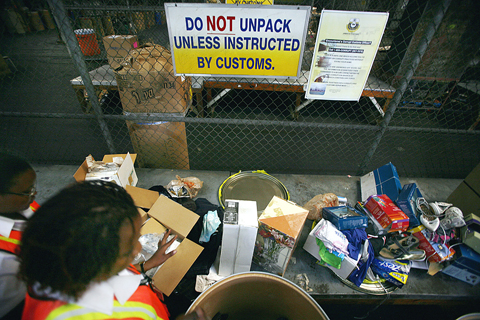
PHOTO: AP
“It’s going to push a lot of that trade back toward the Caribbean like it was back in the 80s,” said Vance Callender, an attache at the US embassy in Kingston for Immigration and Customs Enforcement (ICE).
US authorities are beginning to target the Jamaican gun-smuggling network as part of a broad effort to boost security in the Caribbean.
But they have a long way to go. Jamaican authorities have confiscated only 100 guns coming into ports in the last five years. That in turn is just a fraction of the 700 or so weapons confiscated on the streets each year.
Authorities know they’re only seeing “the tip of the iceberg,” said Mark Shields, Jamaica’s deputy police commissioner.
With arsenals to rival police firepower, the gangs are blamed for 90 percent of the homicides in Jamaica — 1,611 last year, about 10 times more than the US rate, relative to population.
Unlike in Mexico, the vast majority of Jamaican guns seized are submitted for tracing. Jamaica and the US Bureau of Alcohol, Tobacco, Firearms and Explosives find most of the seized weapons come from three Florida counties — Orange, Dade and Broward — all with large Jamaican populations, Shields says.
X-ray scanners were installed two years ago at Jamaican ports, but the gangs use bribery and intimidation to get their shipments past inspectors.
In April, a newly hired customs supervisor was shot at on his way home from work, authorities say. The man was known for his strict scrutiny of cargo coming into a gang-infiltrated warehouse on the Kingston wharf.
When the gangs apply pressure, “no one says no,” said Danville Walker, Jamaica’s commissioner of customs.
“It’s a massive problem,” said Leslie Green, a Jamaican assistant police commissioner. “There aren’t any checks or any controls on goods leaving the United States. Yet anything leaving here, we have to make sure it’s double-checked and tripled-checked for drugs.”
This complaint — that Americans care only what comes in, not what goes out — echoes that of Mexican authorities, who say cars going from the US into Mexico aren’t searched for weapons or cash.
Now hundreds of agents are participating in a US$95 million outbound inspection program, stopping suspicious-looking cars and trucks as they cross into Mexico.
The US and Jamaica both prohibit the unlicensed transport of guns. But like Mexican smugglers, Jamaican ones depend on lax US gun laws, corrupt customs inspectors and front men acting as buyers.
Florida gun laws make it relatively easy to buy a legal firearm, and much of the smuggling is done by family and friends, said Shields, the Jamaican police official.
The guns are concealed in container loads of blue plastic and cardboard barrels, the kind Jamaicans use to send household goods to their families on the island.
Some shipping companies advertise a no-questions-asked policy in soliciting customers, said Walker, the customs commissioner. He declined to single out individual companies.
Besides coming in on freighters, authorities say, guns are stolen or purchased from crooked police or in “guns-for-ganja” deals by fishermen, who bring homegrown marijuana to nearby Haiti and return with pistols, revolvers and submachine guns — many of them believed to be from the US as well.
Callender’s US customs unit began investigations in Jamaica last year with a focus on guns. He said agents in Miami and New York have been working to “interject themselves” into the shipping networks. Indictments are imminent in two or three cases involving suspected Jamaican traffickers inside the US, he said.
Then there’s the US$45 million Caribbean Basin Security Initiative on regional security, announced by Obama in April, which is designed to help the islands counter any spillover of violence from Mexico.
Meanwhile, at the ports, Jamaican customs officials are training more spotters to patrol the warehouses, including five in Kingston who process an average of 10 shipping containers daily.
But inspectors feel the odds are still stacked against them.
“The guys we’re up against, they have time, they have money, and they are very resourceful,” said Andrew Lamb, a supervisor with Jamaica customs’ Contraband Enforcement Team. “They’re pretty good at what they do.”
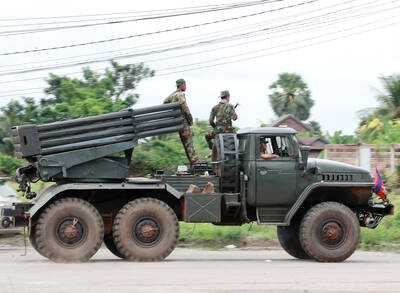
POLITICAL PATRIARCHS: Recent clashes between Thailand and Cambodia are driven by an escalating feud between rival political families, analysts say The dispute over Thailand and Cambodia’s contested border, which dates back more than a century to disagreements over colonial-era maps, has broken into conflict before. However, the most recent clashes, which erupted on Thursday, have been fueled by another factor: a bitter feud between two powerful political patriarchs. Cambodian Senate President and former prime minister Hun Sen, 72, and former Thai prime minister Thaksin Shinawatra, 76, were once such close friends that they reportedly called one another brothers. Hun Sen has, over the years, supported Thaksin’s family during their long-running power struggle with Thailand’s military. Thaksin and his sister Yingluck stayed
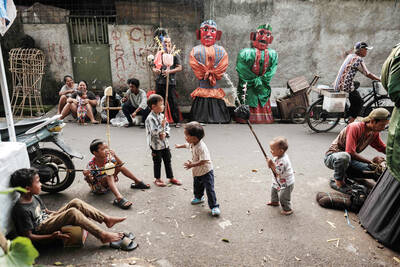
In the sweltering streets of Jakarta, buskers carry towering, hollow puppets and pass around a bucket for donations. Now, they fear becoming outlaws. City authorities said they would crack down on use of the sacred ondel-ondel puppets, which can stand as tall as a truck, and they are drafting legislation to remove what they view as a street nuisance. Performances featuring the puppets — originally used by Jakarta’s Betawi people to ward off evil spirits — would be allowed only at set events. The ban could leave many ondel-ondel buskers in Jakarta jobless. “I am confused and anxious. I fear getting raided or even
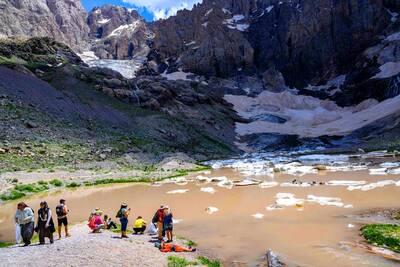
Kemal Ozdemir looked up at the bare peaks of Mount Cilo in Turkey’s Kurdish majority southeast. “There were glaciers 10 years ago,” he recalled under a cloudless sky. A mountain guide for 15 years, Ozdemir then turned toward the torrent carrying dozens of blocks of ice below a slope covered with grass and rocks — a sign of glacier loss being exacerbated by global warming. “You can see that there are quite a few pieces of glacier in the water right now ... the reason why the waterfalls flow lushly actually shows us how fast the ice is melting,” he said.
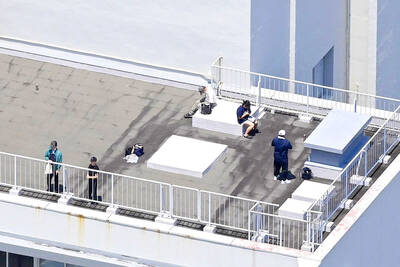
Residents across Japan’s Pacific coast yesterday rushed to higher ground as tsunami warnings following a massive earthquake off Russia’s far east resurfaced painful memories and lessons from the devastating 2011 earthquake and nuclear disaster. Television banners flashed “TSUNAMI! EVACUATE!” and similar warnings as most broadcasters cut regular programming to issue warnings and evacuation orders, as tsunami waves approached Japan’s shores. “Do not be glued to the screen. Evacuate now,” a news presenter at public broadcaster NHK shouted. The warnings resurfaced memories of the March 11, 2011, earthquake, when more than 15,000 people died after a magnitude 9 tremor triggered a massive tsunami that